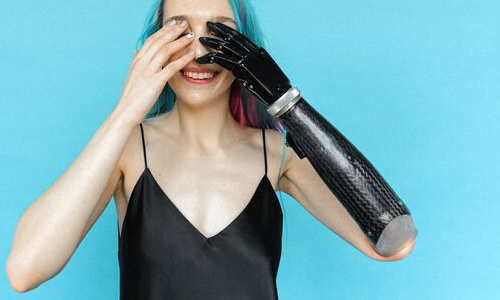Consumers are asking brands to include more diverse and inclusive representations that reflect society. While this call for inclusion is important, much of the attention has focused on racial, ethnic, and LGBTQ+ representation and continues to lack disability representation. Companies who address these calls for action must do so in a way that is genuine so that their actions are not perceived simply as a marketing tactic.
Despite being the largest minority group in the United States, people with disability are underrepresented in advertisements. This act of intentional exclusion is known as ableism. Ableism refers to “stereotyping, prejudice, discrimination, and social oppression toward people with disabilities” (Bogart & Dunn, 2019, p. 651). People with disabilities have historically been banned from public spaces because of their stigmatised attributes. The passing of the Americans with Disabilities Act (ADA) prohibited discrimination against people with disabilities, essentially making it illegal to exclude people with disabilities from physical public spaces. But it still left room for more subtle forms of exclusion, including lack of representation in ads.
A study in 2012 found that out of 1,671 prime-time commercials, only 1.7% portrayed people with a disability. Since then, popular brands like Nike, ASOS, Tommy Hilfiger, Microsoft, American Eagle, Target, and Home Depot have responded to consumers with more inclusive campaigns and have increased their disability representation in ads.
However, not every company’s diversity and inclusion initiative has been met with positivity. In 1997, Mattel, one of the largest toy manufacturing companies in the US, launched a Barbie doll with a disability, Becky, who used a wheelchair. While the first two weeks of Mattel’s launch was a success in terms of sales and praise, the launch was quickly met with criticism as consumers began realising that Becky’s wheelchair was incompatible with Barbie’s Dreamhouse.
Nike’s efforts have garnered mixed reactions, too. Since 2012, Matthew Walzer, a then teenager with cerebral palsy, has worked collaboratively with Nike in redesigning some of their sneakers to be more accessible. Nike released a video to promote the newest edition to the FlyEase line, a distinct new hands-free sneaker – not an adaptation of a previous sneaker – that was intentionally designed to be accessible. The Nike Go FlyEase shoe also received criticisms. Some people are asking why Nike’s ad promotes the accessibility of the design but hardly mentions the disability community or the man who initially called for more accessible footwear. And exclusion from the promotional video is not the only concern. The Nike Go FlyEase is set to sell for $120 USD. With disabled people being twice as likely as nondisabled people to be living in poverty, some are questioning the affordability of the sneakers. Nike is being accused of potentially earning significant profits on the accessibility marketing tactic while erasing those they profit from.
Inclusion or Objectification?
A brand’s diversity and disability representation in advertising is important to many consumers. Brands may value diversity and disability representation for 1 of 2 reasons: 1) brands authentically value their customers and the diverse backgrounds they come from or 2) brands value revenue.
The latter reason for diversity and inclusion efforts is referred to as objectification. American philosopher Martha Nussbaum defined objectification as the act of treating someone as though they are an object to be used by another person. The objectified person is merely seen as an instrument. Another notion of objectification is that the perpetrator treats the objectified person as though they do not have feelings. These two notions may explain the difference between authentic inclusion initiatives and those that are disingenuous and the difference in reactions towards different campaigns, such as that of Aerie’s and that of Barbie’s.
Authenticity maintains customer support, but so does accessibility and affordability. So, it should not be surprising to know that objectification in advertisements can produce negative responses. But how do consumers know that the brand’s inclusion efforts are genuine? How do we know that the initiative to include people with disabilities is not just simply to check off the brand’s diversity box?
It is difficult for consumers to know the brand’s true intentions, but there are hints and questions that we as consumers can ask ourselves: How long has the inclusion campaign and effort been in place? Are the efforts continued and consistent? Who is a part of the company’s team? Similarly, who is not a part of the company’s team? Are people with disabilities included in the advertisement planning? When appropriate, does the advertisement center disabled people? The answers may not always be available to consumers, but they should be.
Advertisements that include people with disabilities should be about the people, not about their disabilities. And diversity and inclusion are not just about the models but also about the team that designs the inclusion campaigns and makes it a success. Anything less may hint at ableism and the commodification of diversity.
By Sydney Tran writing for Psychology Today

